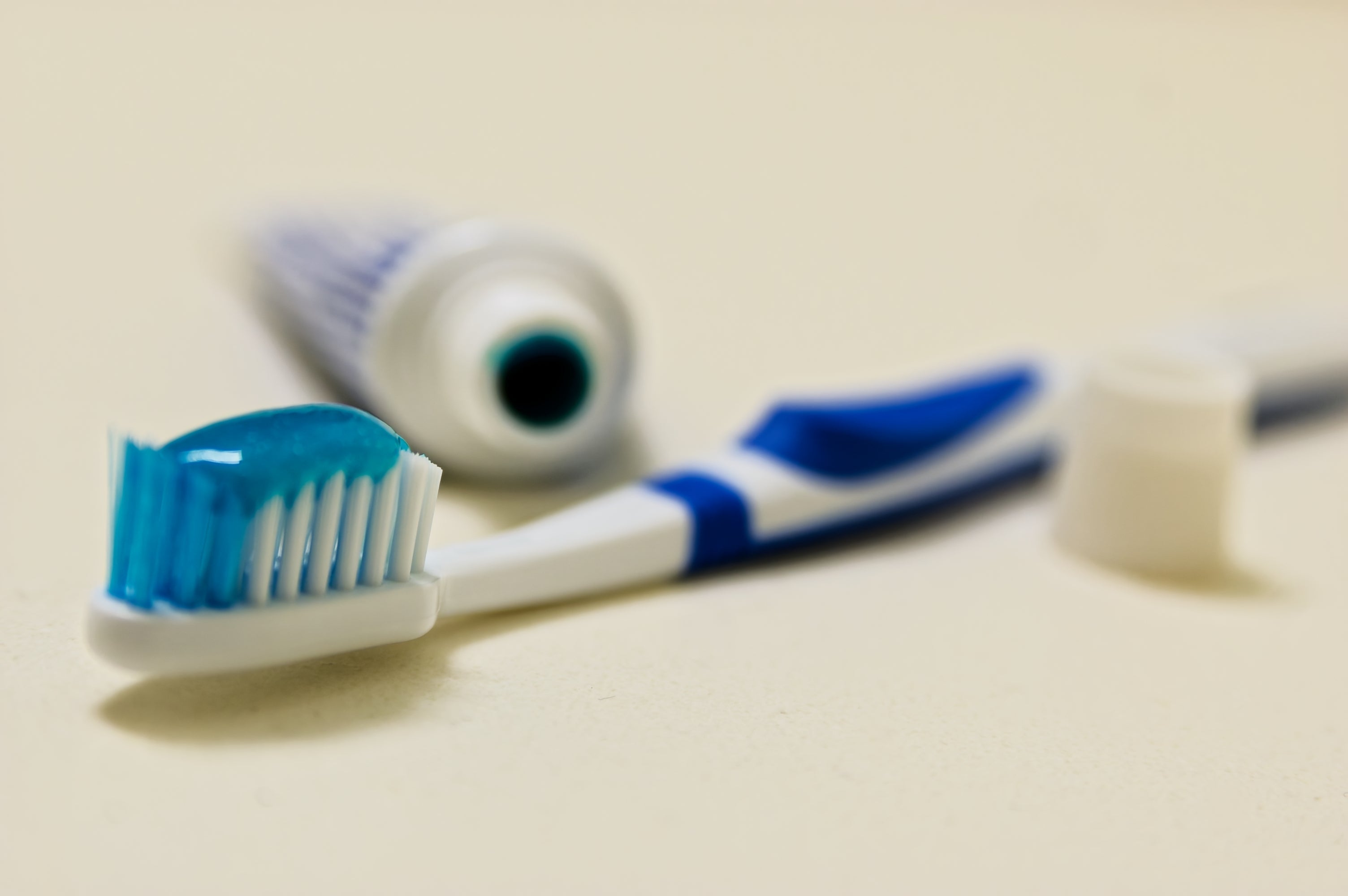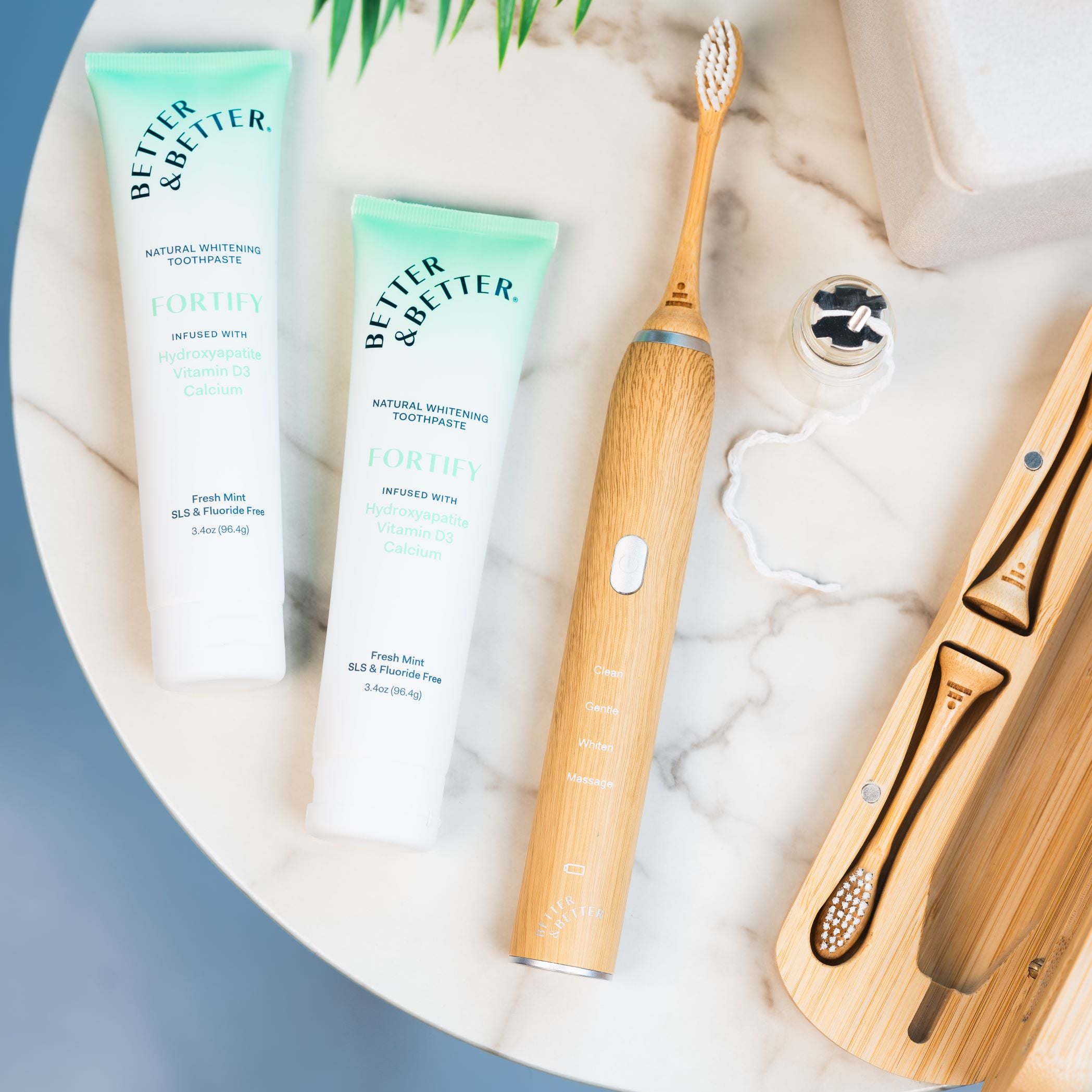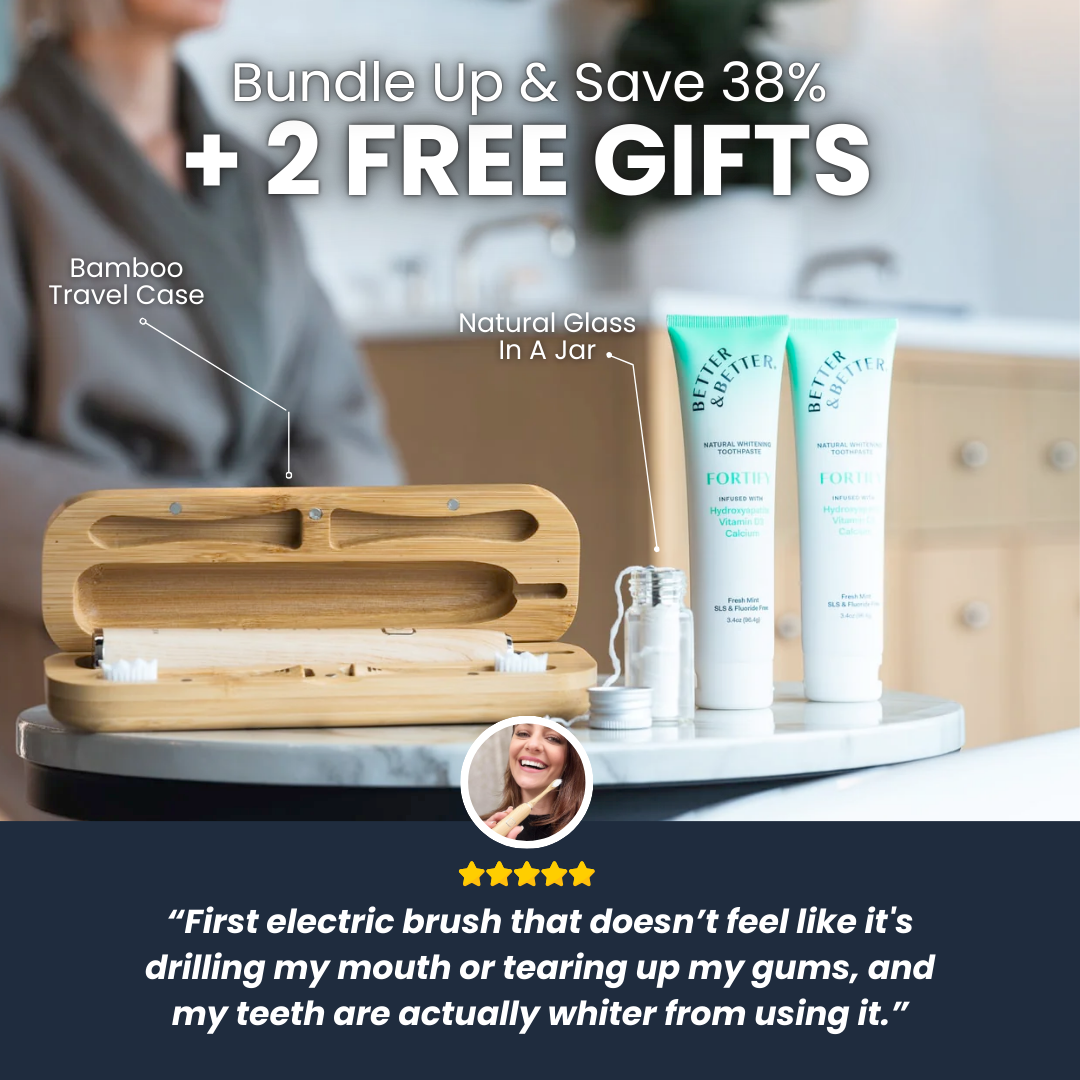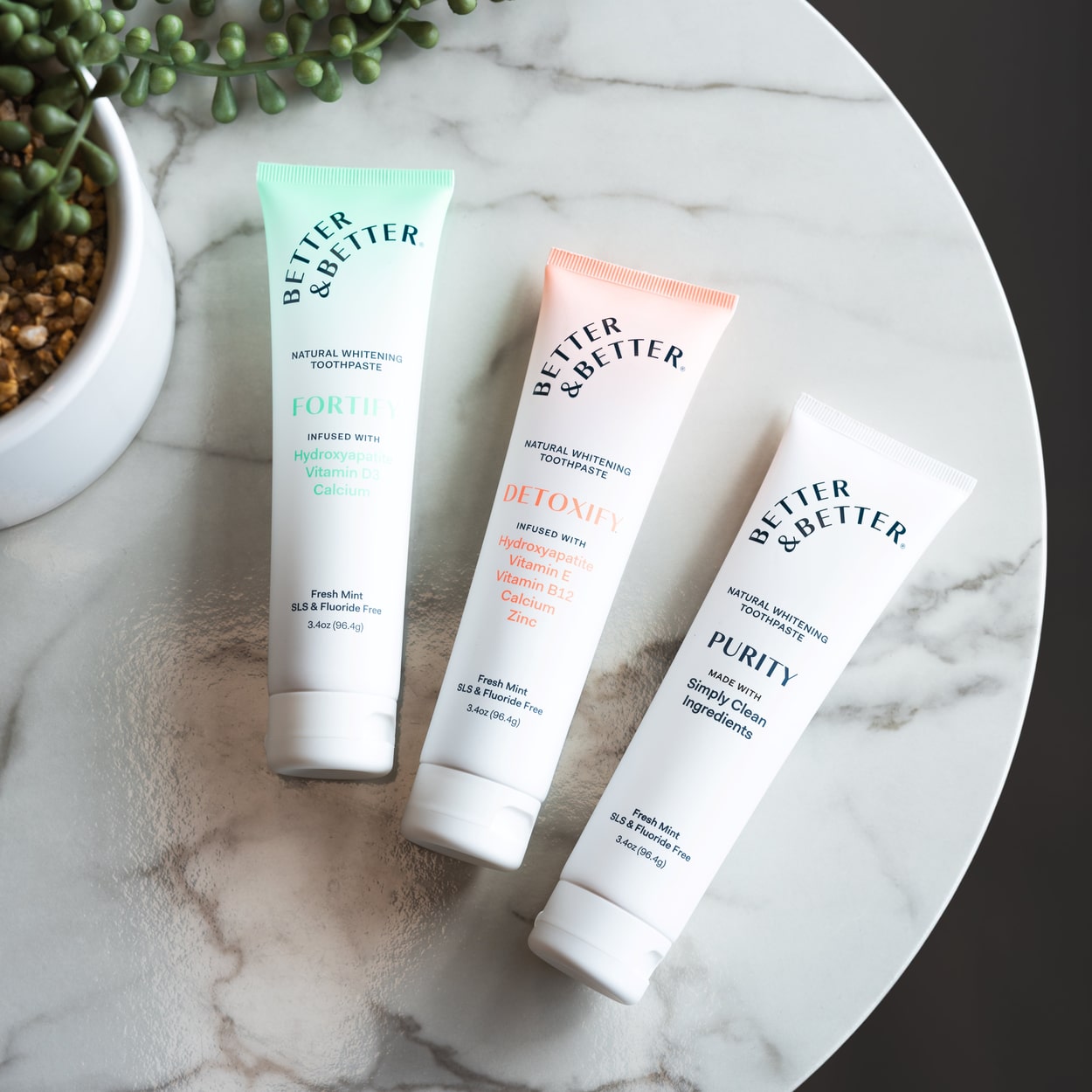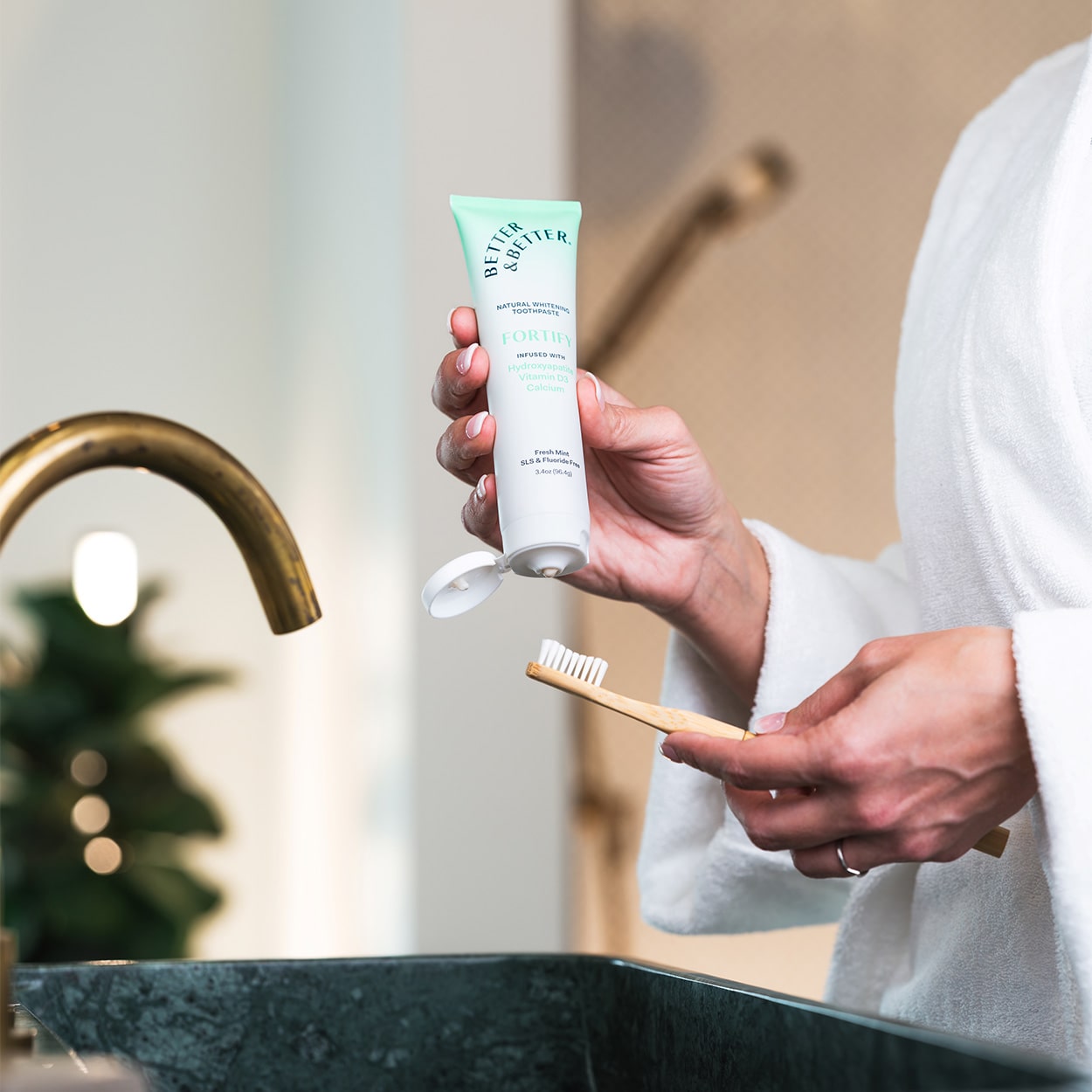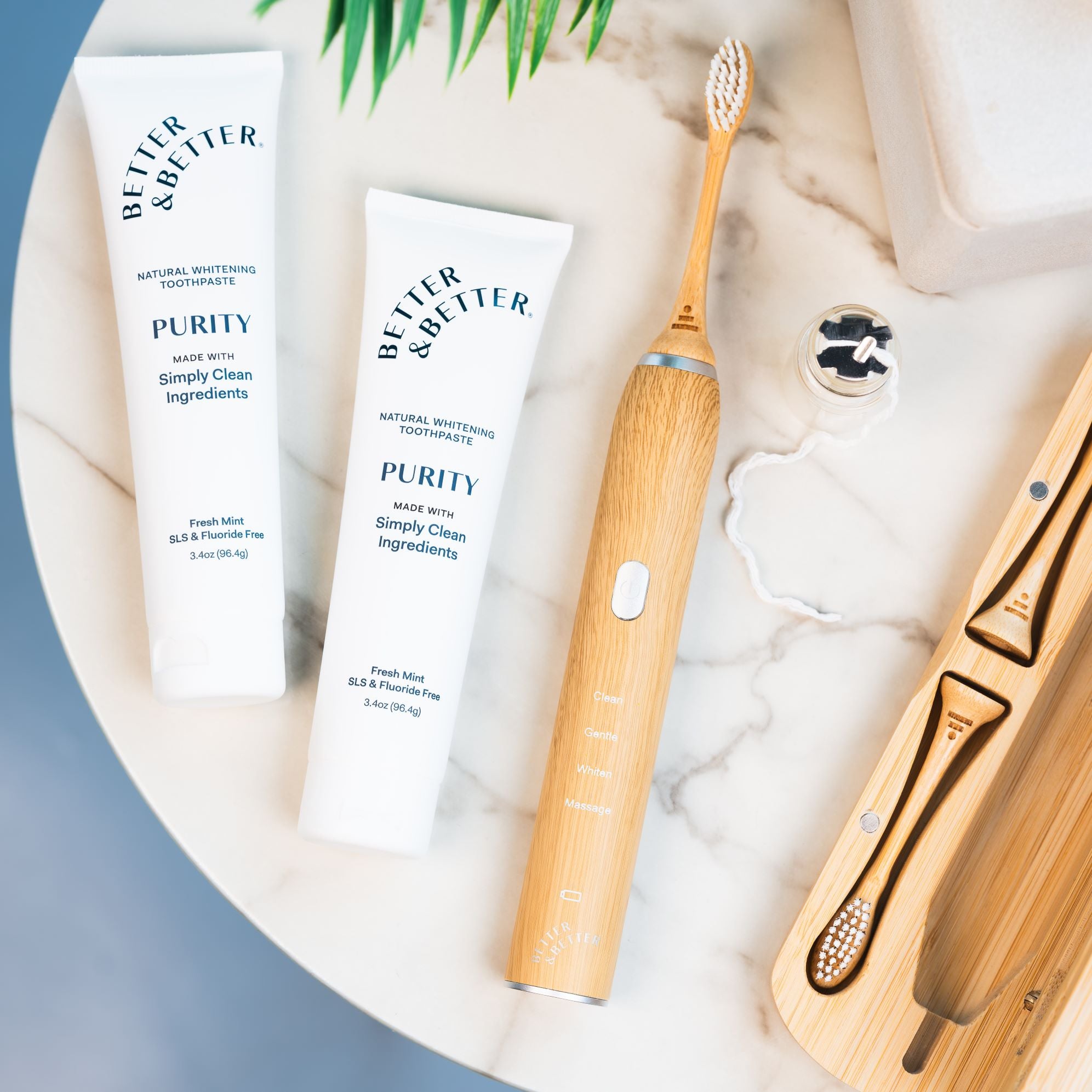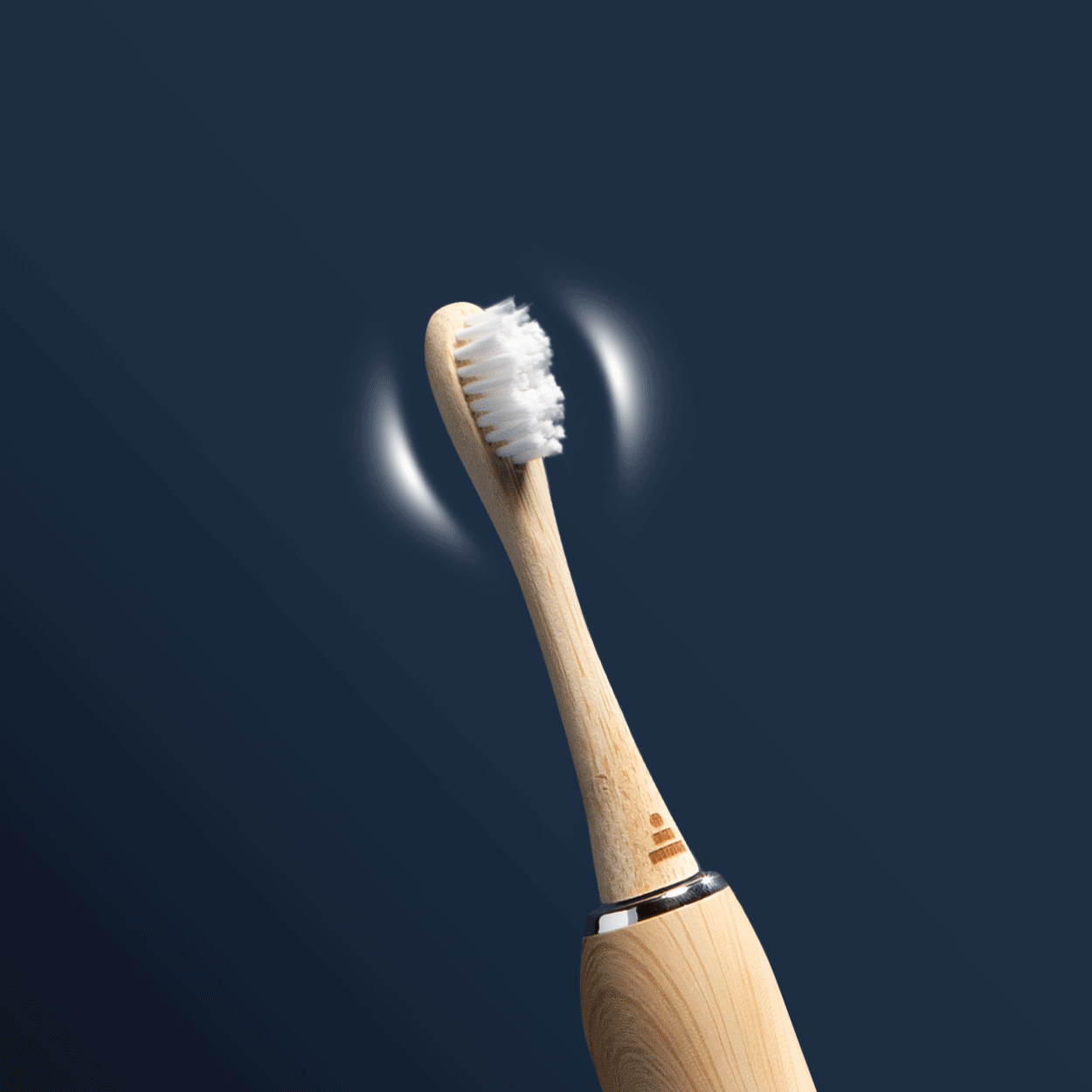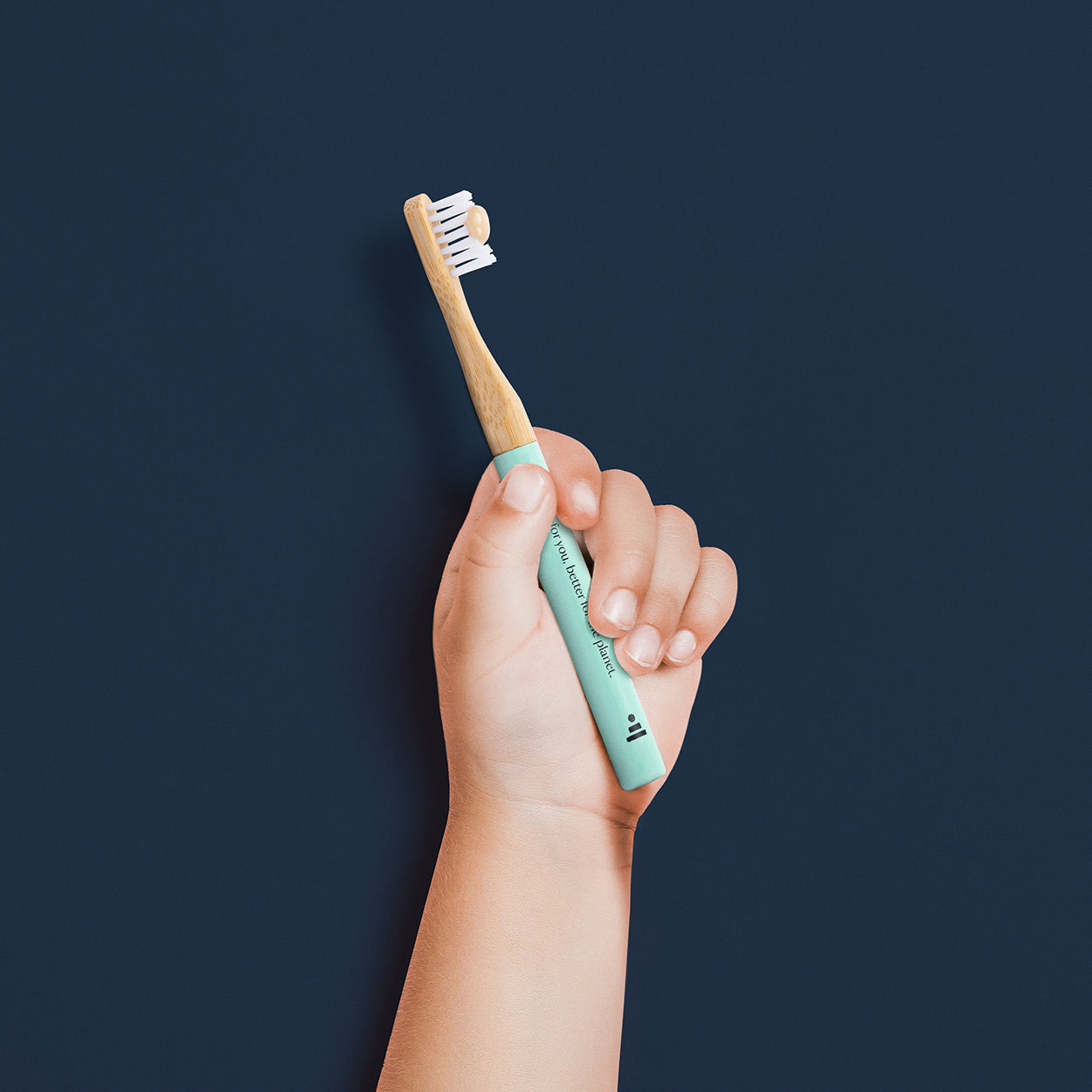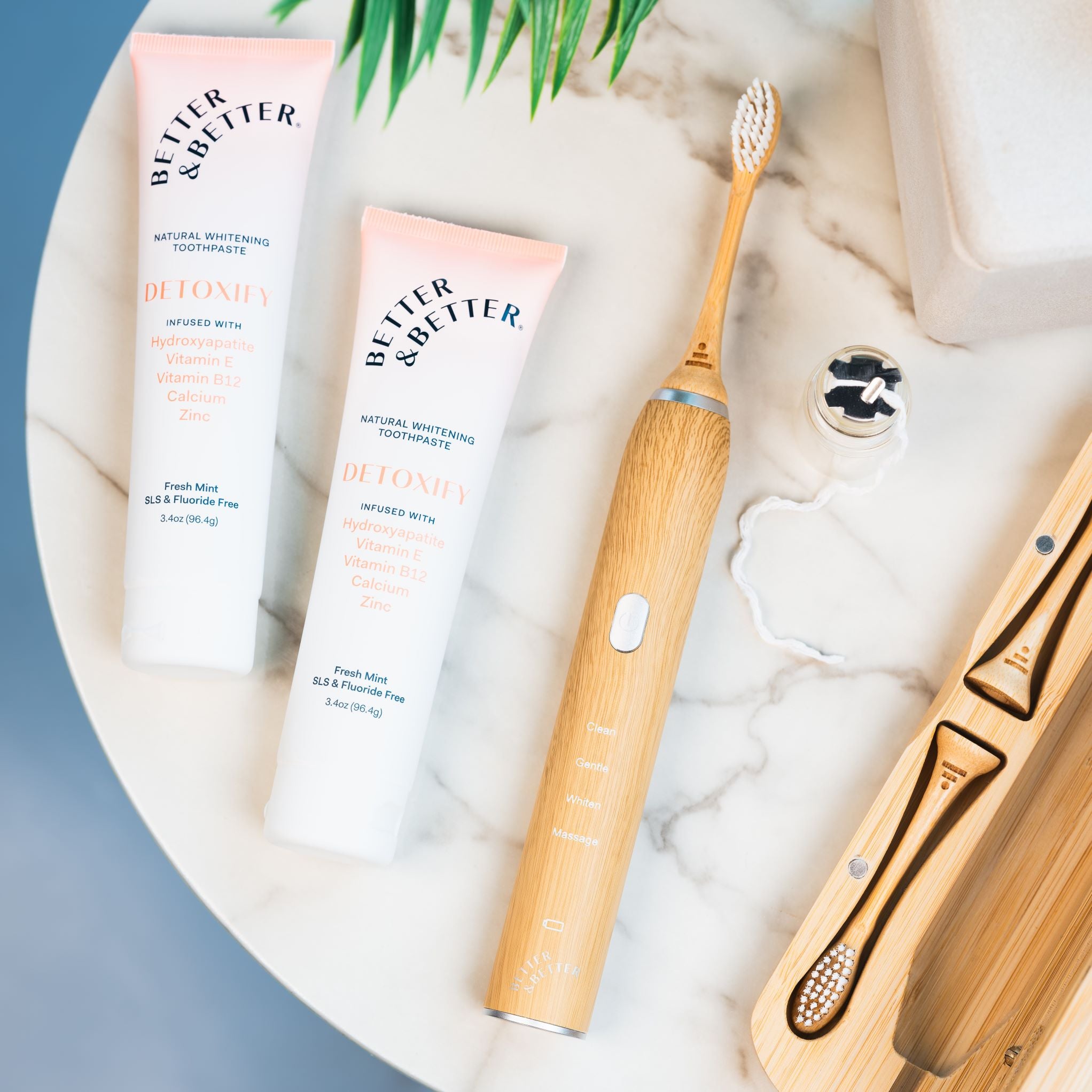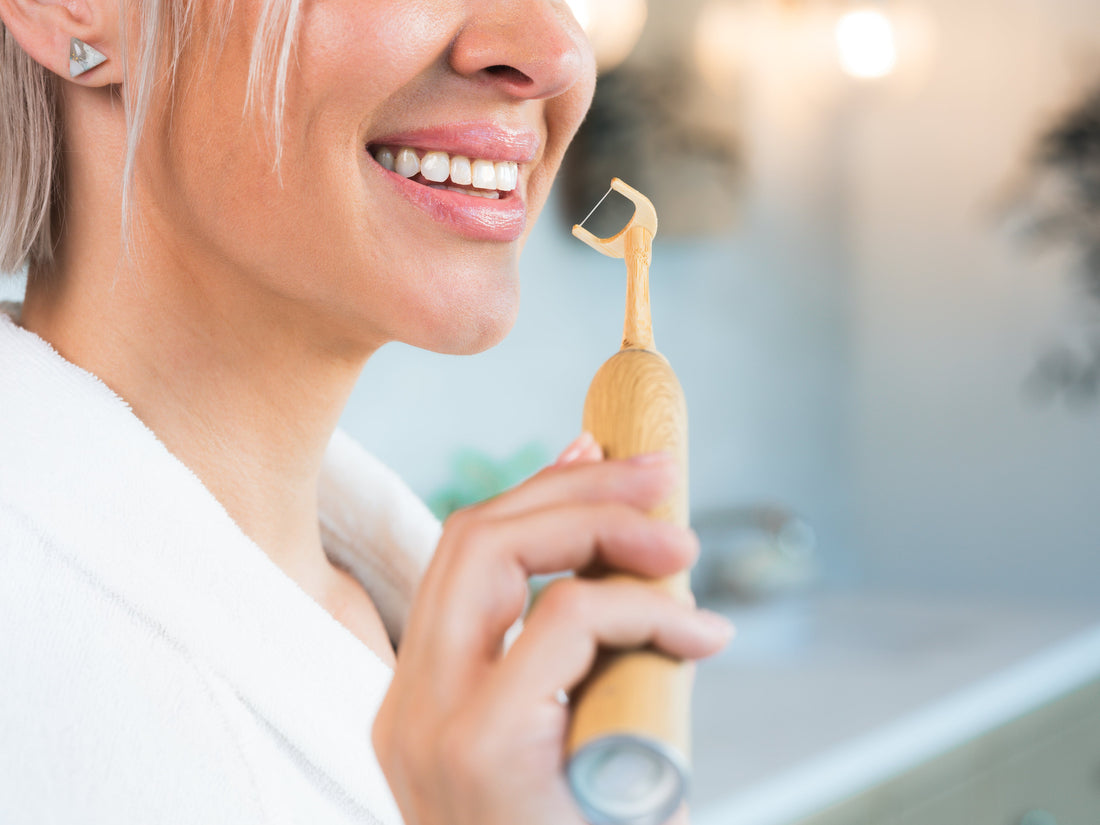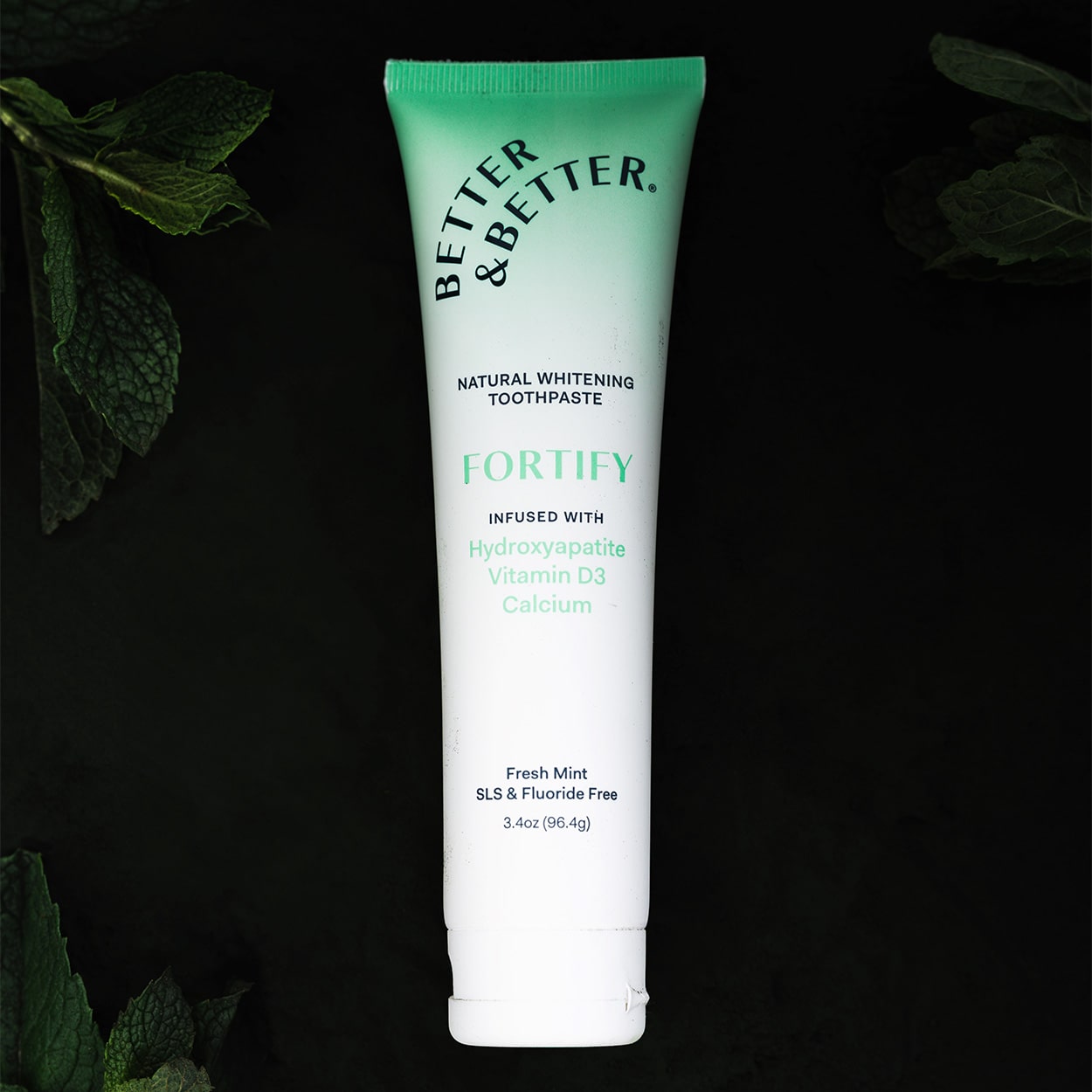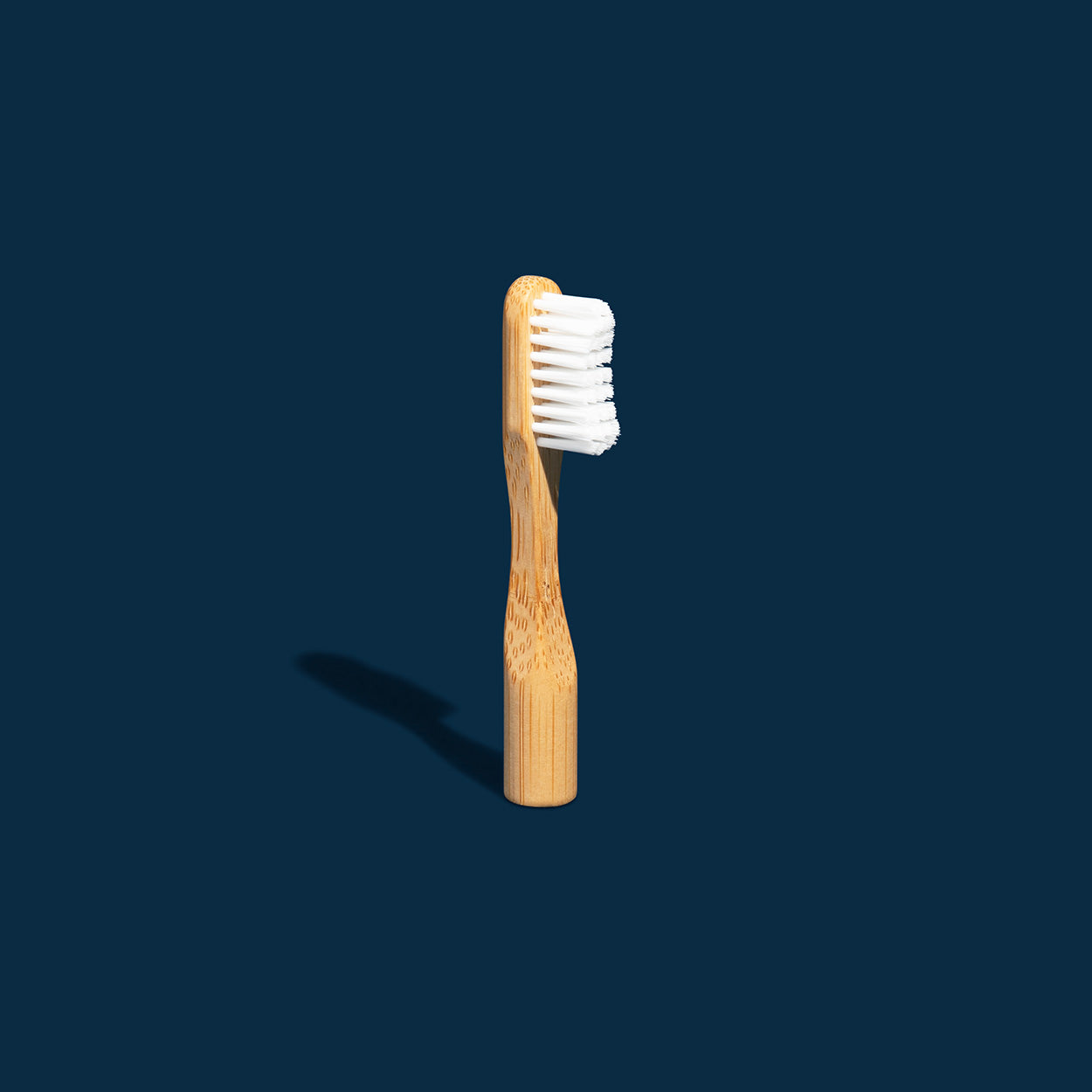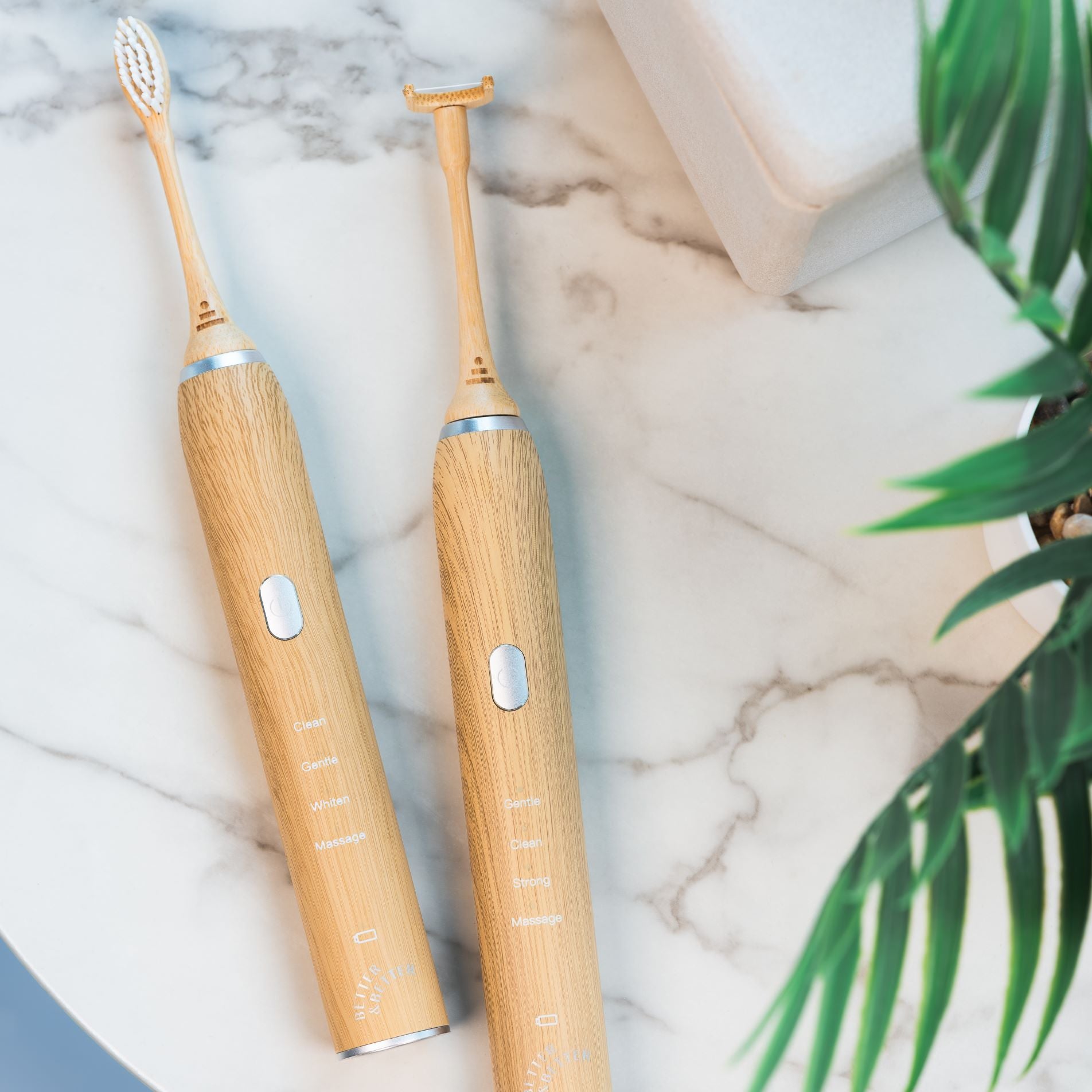Toothpaste allergies can be caused by sodium lauryl sulfate (SLS), artificial flavorings, and propylene glycol. The most common symptoms are an itching or burning sensation inside or around the mouth after brushing your teeth.
It’s not the most common allergy out there, but a toothpaste allergy can be a real pain in the mouth. If you’ve been cutting out elements of your diet and still experiencing oral symptoms like itching or burning around your mouth, on your tongue, or on the roof of your mouth, you might want to take a closer look at your bathroom cabinet. Irritating or allergenic ingredients in your oral care products may be the culprit.
In this article, we’ll explore some common toothpaste allergy symptoms, what causes them, and how to get relief.
5 Toothpaste Allergy Symptoms
Most toothpaste allergies present as contact dermatitis, meaning the allergic reaction happens when a certain ingredient comes in contact with your skin. Reactions inside the mouth and affecting the oral mucosa, called contact stomatitis, are possible, but less common than the skin reactions listed below.
Some toothpastes contain common allergens, like gluten, soy, or coconut, which can mirror a person’s typical allergy symptoms throughout the body, as opposed to the reactions in and around the mouth that may result from toothpaste ingredients not commonly found in food (like SLS).. Be sure to check the label carefully before you brush.
If you’re experiencing one or more of the following symptoms and haven’t identified the source, it’s worth exploring whether a toothpaste allergy may be to blame.
1. Itching or Burning Around Your Mouth (Perioral Dermatitis)
If you experience an itching or burning sensation around your mouth, it could be indicative of perioral dermatitis, a skin condition associated with toothpaste allergies. This reaction often manifests as red, bumpy rashes.
2. Tongue Irritation
Toothpaste allergies can cause your tongue to itch, swell up, or become hypersensitive. If you notice persistent tongue discomfort after brushing your teeth, your toothpaste might be to blame.
3. Swollen Gums
Allergic reactions to ingredients in toothpaste can cause irritation, redness, swelling, or hypersensitivity of the gum tissue.
4. Canker Sores
Canker sores from a toothpaste allergy may appear as small, red, or white ulcers on the soft tissues inside the mouth, such as the cheeks, gums, or tongue. They can be accompanied by a tingling or burning sensation, causing discomfort while eating, drinking, or talking. The sores can vary in size and may be surrounded by redness.
5. Irritated Lips (Cheilitis)
Irritated lips from a toothpaste allergy can cause redness, swelling, or dryness on or around your lip area. The skin on the lips may appear chapped, and you might notice flakiness or peeling. It’s also possible to experience a stinging or burning sensation on the lips.
7 Toothpaste Ingredients that Can Cause Allergic Reactions
Understanding the ingredient list on your toothpaste or mouthwash is the first step to identifying the source of your allergy. Here are 7 potential allergens to look out for.
1. Sodium Lauryl Sulfate (SLS)
Sodium lauryl sulfate (SLS) is probably the first ingredient you’ll want to cut out if you’re experiencing symptoms from your toothpaste—especially canker sores. In a 2019 review, scientists observed a significant decrease in pain, frequency, and duration of canker sores when patients stopped brushing with a toothpaste containing SLS.
While an SLS allergy is not very common, a sensitivity to SLS is very common. In a study conducted in Germany, a staggering 42% of participants showed an irritant reaction to the ingredient. SLS is also the most common ingredient on this list—you’ll find it on the ingredient list of everything from shampoo to laundry detergent.
2. Artificial Flavorings
The majority of allergic reactions to toothpaste are caused by flavoring agents (both synthetic and natural), which are often hiding in the ingredient list as “natural flavors.” Of the potentially allergenic flavorings you’ll see on the label, peppermint, spearmint, and wintergreen flavors are the most common.
3. Propylene Glycol
Propylene glycol, used as a preservative, is another irritant commonly found in toothpaste and a whole host of common personal care products. In a study of 1,494 people experiencing dermatitis, 6% showed a negative reaction to propylene glycol.
4. Gluten
When you think of gluten allergies, you’re probably thinking about bread, not toothpaste. But you may be surprised to learn that many big brand toothpastes contain gluten, often used as a thickener. One such example is sorbitol, which may be derived from grain. In addition, “natural flavors” on an ingredient list may include flavors that are malt-based.
If you have Celiac disease or a gluten sensitivity and are experiencing symptoms despite cutting gluten from your diet, take a closer look at the ingredient list on your toothpaste.
5. Cocamidopropyl Betaine (CAPB)
Derived from coconut oil, this additive is found in many commercial detergents and personal care products. It’s used as a surfactant (meaning it helps break up grease and oils), a thickener, and a foaming agent. In toothpaste, it can cause skin irritation around the mouth, especially in those who have sensitive skin or eczema.
6. Essential Oils
Although they are a natural ingredient, essential oils are actually one of the most common causes of allergic reactions to toothpaste. Unlike the others on this list, this ingredient is more likely to be found in a natural toothpaste. According to a 2017 study, cinnamon oil (both natural and synthetic) is one of the most common offenders, as well as peppermint and spearmint oils.
7. Fluoride
This one’s extremely uncommon, but still bears mentioning. There have only been two recorded instances of fluoride allergy in humans, so chances are that you can count out fluoride toothpaste as a potential cause of your symptoms.
How to Treat an Allergic Reaction to Toothpaste
If you suspect that a toothpaste allergy may be to blame for your uncomfortable symptoms, the first step to take is to stop using the toothpaste. You can try swapping it out for a natural, nontoxic toothpaste free from the ingredients above, like Better & Better’s Purity Toothpaste.
That said, only your dentist or allergist can diagnose a toothpaste allergy. They will use what’s called a “patch test” to evaluate which ingredients are a trigger for you. That said, if you find a natural alternative that works for you, you may be able to find relief without a visit to the doctor.
In addition to recommending a different toothpaste, your healthcare provider may also suggest trying a low-dose topical steroid.
Out With the Bad, In With the Better
If you’re looking for a toothpaste free of ingredients known to cause allergies, try swapping out your big-brand toothpaste for a natural formula from Better & Better. All formulations are free of SLS, fluoride, gluten, and artificial colors, flavors, and preservatives, so you can brush worry-free.


